One of the factors that’s critical for precision long-range shooting is correct alignment between the cartridge’s bullet, and the chamber/bore of the rifle. There are two key factors that contribute to bullet/bore alignment: case neck concentricity (along with case neck thickness consistency) and bullet runout. If the bullet is axially and radially aligned with the bore, you’ll get better groups and better results with long range shooting.
There’s a tool from Sinclair International that you can use to check both case neck concentricity and bullet runout, it’s called the Sinclair Concentricity Gauge. And that’s the topic for this article!
The Sinclair Concentricity Gauge is available with or without a dial indicator, so if you already have a spare dial indicator, you can save some money!
Checking Case Neck Concentricity
In order to check case neck concentricity (a test of how closely concentric the case body is compared to the case neck) you’ll setup the tool as follows:
- Set dial indicator swing angle and height if not already set. The swing aligns indicator over center of cartridge, where the height adjustment should allow for about 1/4″ – 1/2″ of indicator plunger retraction.
- Loosen both front and rear roller block clamps.
- Position the rear roller block (with vertical roll pin) such that the case neck is centered under the indicator plunger, lock the clamp.
- Position the front roller block such that the rollers are 1/16″ to 1/8″ away (to the right) from the shoulder transition.
You can now spin the cartridge or case on the rollers (fixed ball bearings) while pushing down. It’s important that you push down and also push the case to the right at the same time. This will keep the case seated against the rollers on the bottom, and the roll pin guide on the right-hand side. As you spin the case or cartridge, note the total indicator reading. This is your concentricity error for neck-to-body alignment.
Checking Bullet Runout
Setting up the Sinclair Concentricity tool to measure bullet runout is essentially the same as setting it up for case neck concentricity checks (see above). The difference is the lateral placement of the roller blocks. Instead of centering the indicator plunger on the case neck, you’ll pick a location on the bullet’s axis. This bullet axis location could be at the ogive, between the ogive and tip, or near the tip of the bullet. If you intend to track your results for bullet runout and compare figures, it’s really important to measure at the SAME PLACE along the bullet’s axis.
When I compared fourteen single-stage reloading presses, I used the same distances for bullet runout measurement. From that article:
Using the case mouth as a datum point, the cartridges were measured at the same distances using the lathe DRO to get exact distances as shown on my notes sheet here:
For those tests, I measured runout near the ogive (0.200″ from case mouth) and near the tip- 0.600″ from the case mouth. Again, the most important thing is consistently documented datum references for your measurements if you want to compare results.
The third method I’ve used is using the Sinclair Concentricity Gauge covered in this article!
Conclusion
I have used three different methods to measure concentricity for cases and cartridges:
The Hornady Lock-N-Load Concentricity Gauge (only for bullet runout):
This tool works great and you can even correct for bullet runout if the runout is slight. The downside is that you can’t check case neck concentricity with this tool.
For the fourteen single-stage reloading press comparison I chucked up an L.E. Wilson case holder (for their case trimming system) in my Precision Matthews PM-1440GT lathe, and dialed it in within 0.0002″ runout (for the case holder itself).
I then used an indicator to measure neck concentricity and bullet runout in a very similar way compared with the Sinclair Concentricity Gauge. This worked quite well, and is probably the best way to check concentricity since it mimics the way a cartridge is held in the rifle’s chamber. It is however not feasible for most reloaders since ownership of a lathe is rare. It also requires a lot of setup time, and ties up the lathe while the setup is being used for concentricity and runout checks.
For simple, quick, and accurate concentricity checks, the Sinclair Concentricity Gauge is the best tool I’ve used so far. If you are interested in more information, or in purchasing this tool, check it out at Brownells.com:
Don’t miss out on Ultimate Reloader updates, make sure you’re subscribed!
Thanks,
Gavin
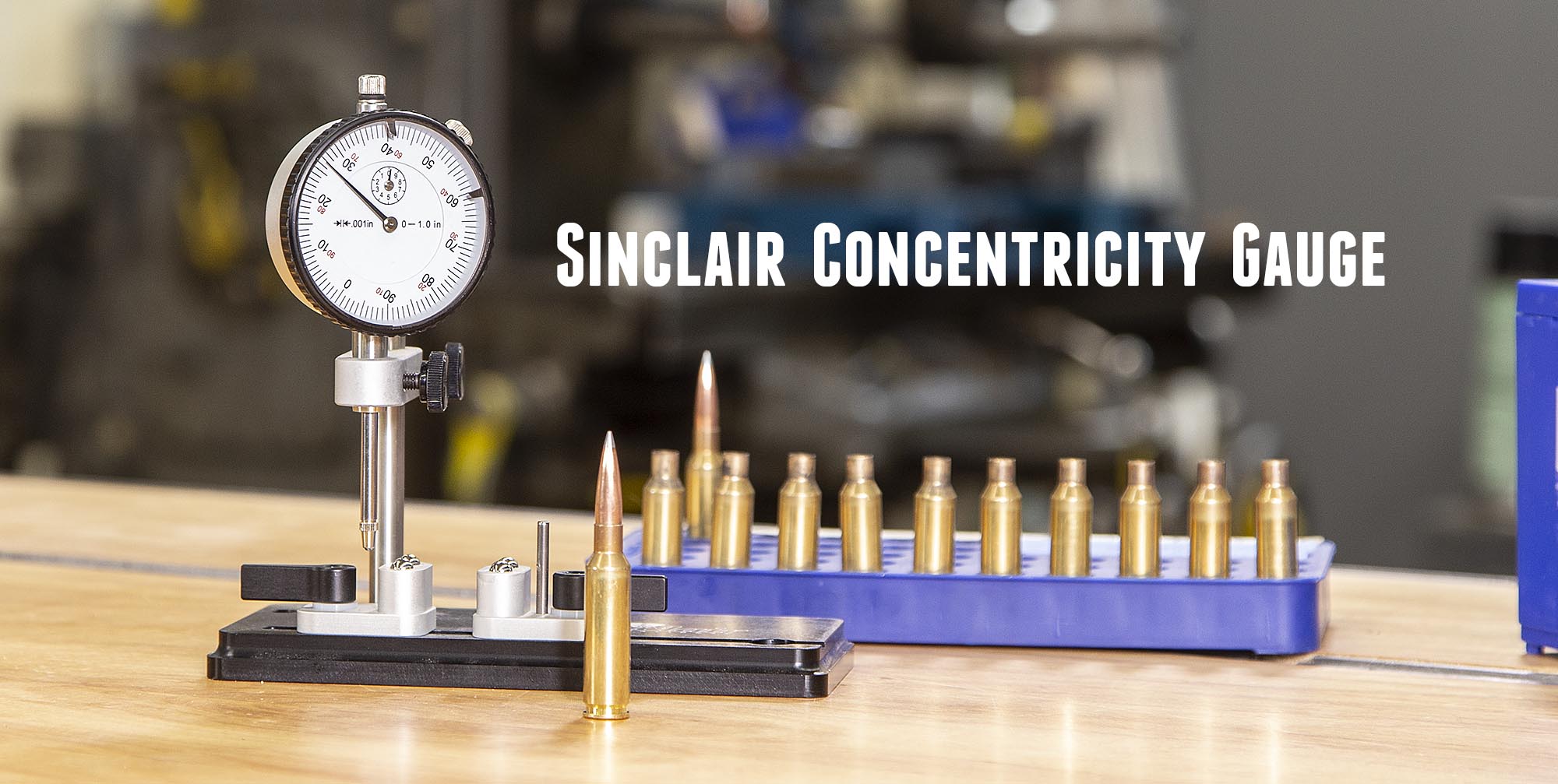
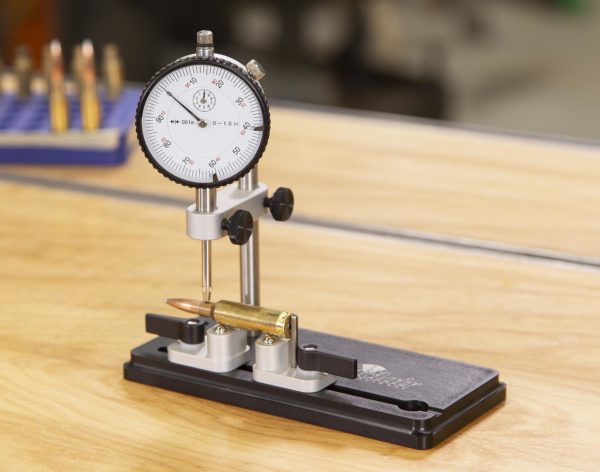
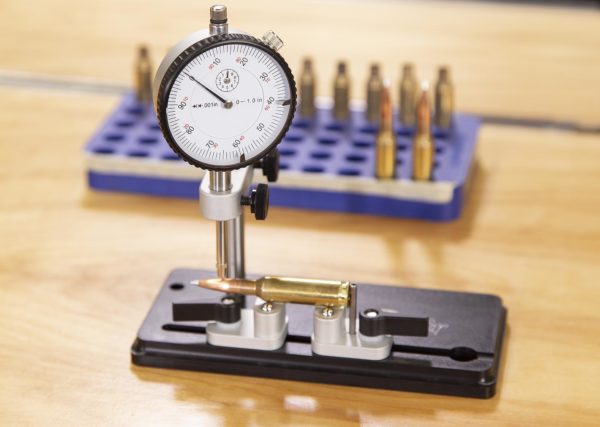
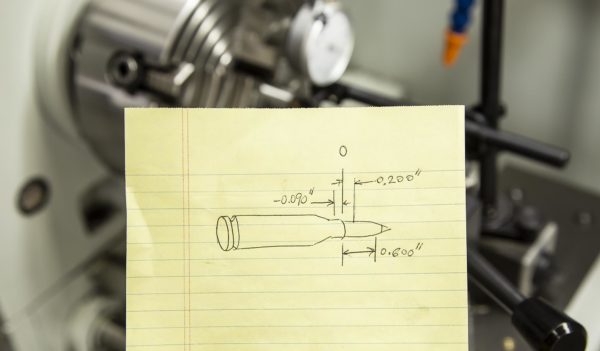
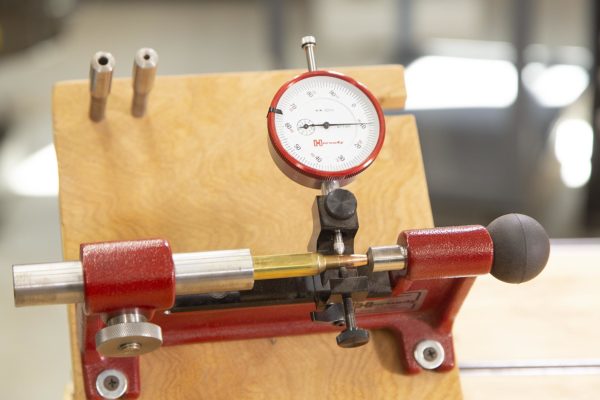
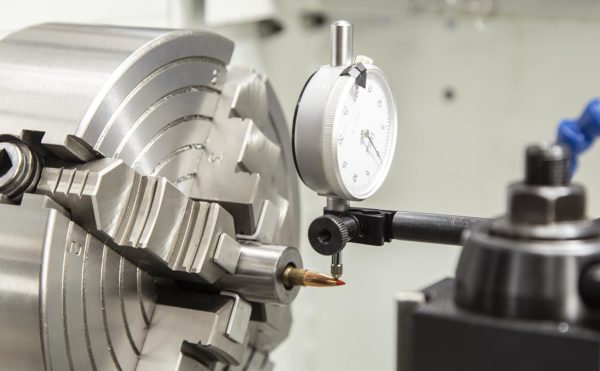
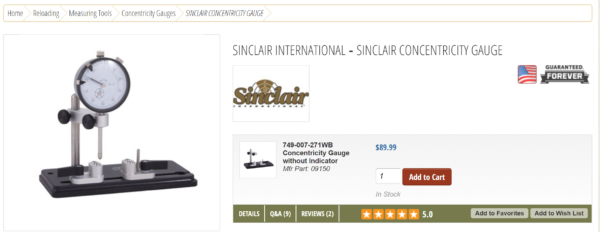


















































































Everything Sinclair makes for reloading is quality equipment.
Ordered one several years ago with gauge included. Big mistake! Gauge was rusted Chinese junk and the Sinclair base on mine had some very obvious tooling marks. Not cool and they were not on the least apologetic.
I began my research and wound up with a great gauge from 21st Century. No retreats. At the time I also found information which states that dial gauges were not the best choice in this application. All that knowledge is now long forgotten, but I did order the 21st Century Concentricity Gauge without a gauge so that I could choose obtain a BestGauge myself and insure the quality of why was getting.
Your a machinist, why not use the best type of gauge for your application!
Barry,
I agree if you are going to invest serious bucks into a powder measure system as Gavin has why not look at 21st Century tools for reloading. “Buy once Cry once” the 21st Century concentric gauge with wheel and indicator is a better tool and value. I will agree that Sinclair does offer some top choices in reloading etc. as I have purchased before but for the difference, the 21st Century tools are Strongly worth considering. Check out the neck turning tool amongst other tools offered as well. I am saving my nickols now. LOL’s
Remember you get what you pay for Not what you did not pay for there spend wisely.